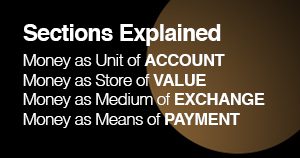Domestic payments—those within a single currency area—are becoming faster, easier and safer. But the opposite is true when payments go global.
There are six deep-rooted reasons for the opacity, high cost and slow speed of cross-border payments, write Morten Bech, Umar Faruqui and Takeshi Shirakami of the Bank for International Settlements (BIS) in its latest quarterly review.
First, most cross-border payments pass through the so-called correspondent banking network. Here, chains of banks work to get funds from the person paying to the person receiving the money.
But the BIS has recently warned of a contraction in the number of correspondent banking channels.
The pipes conducting cross-border money flows are getting blocked, in other words. Meanwhile, says the BIS, there’s a rise in shadow payments systems—those outside the control of lawmakers and regulators.
There are deep-rooted reasons for the opacity, high cost and slow speed of cross-border payments
Second, say the authors, cross-border money flows usually involve a currency conversion, often performed by the first or last correspondent bank in the payment chain.
That bank has to use its balance sheet for the trade, as well as managing the associated liquidity and settlement risks. These are all services that come at a cost.
Third, say the BIS’s authors, liquidity management in foreign currencies is complex.
In a domestic payment system, a settlement agent like a central bank often provides intraday liquidity, as well as guaranteeing the finality of settlements.
But for cross-border and multicurrency systems, there is usually no-one to perform the same role.
As a result, counterparties in cross-border payments are often forced to pre-fund their settlement accounts, adding another layer of costs.
Fourth, say Bech, Faruqui and Shirakami, the operating hours, access criteria, clearing and settlement procedures and messaging standards across national payment systems are not harmonised.
Getting countries to make their payments systems interoperable is tough, say the authors, since no one wants to move first.
Fifth, the authors say, compliance risks and costs related to the prevention of money laundering and the financing of terrorism are higher when money moves cross-border. This is because these requirements vary across jurisdictions.
“Connecting payment systems in different jurisdictions gives rise to legal issues”
Sixth, the absence of a global legal infrastructure to harmonise payments systems is perhaps the biggest challenge of all, say Bech, Faruqui and Shirakami.
“Connecting payment systems in different jurisdictions gives rise to legal issues,” they say.
“For instance, differences in settlement finality rules may lead to a scenario where a payment is regarded as final in one jurisdiction but not final in another.”
Bech, Faruqui and Shirakami offer Brexit as a recent example: they point out that the UK’s withdrawal from the EU led several European countries to adapt their solvency laws to ensure settlement finality.
“It is more likely that cross-border systems will face issues arising from a conflict of laws (for example, ambiguity as to which jurisdiction’s laws apply). Closing such legal gaps sometimes requires new legislation or treaties,” the BIS authors say.
As a result of these challenges, 22 of the 23 existing global cross-border payment systems have so far not attracted large volumes, says the BIS.
“Public and private sectors both need to step up their game”
There is one exception, though.
CLS, a private sector firm owned by the largest currency-trading banks, was set up in 2002 to help reduce settlement risk in the foreign exchange (FX) markets. CLS settles hundreds of millions of trades a year, worth over $1,400trn, dwarfing other cross-border payment systems.
The type of risk that CLS helps address—called Herstatt risk—is when one counterparty fails to make a payment in one currency after the other has made its payment in the other currency.
CLS steps into the middle of such trades as a settlement agent. It uses a technique called ‘Payment versus Payment’ (or ‘PvP’) to ensure that the final transfer of a payment in one currency occurs if and only if the final transfer of a payment in another currency or currencies takes place.
But this system is not foolproof. CLS has become ‘super-systemic’, given its massive volumes. It’s too big to fail under any circumstances, posing yet another moral hazard problem for regulators and lawmakers.
And CLS is seeing its share of global FX trades shrink, meaning FX settlement risks are on the rise again.
As a result of a growing market share of emerging currency trades, the proportion of FX trades with PvP protection fell from 50 percent in 2013 to 40 percent in 2019, the BIS said late last year. This reversed a positive trend seen during the previous two decades.
There appears no easy solution to the cross-border payments challenge, despite the potential gains on offer.
In its quarterly report, the BIS says that a functional cross-border system could head off the payments monopolies that private sector firms are now threatening to create.
The BIS cited closed-loop payment systems, like China’s Alipay and WeChat Pay, and peer-to-peer payment projects, like Facebook’s proposed Libra coin, as the types of project it’s worried could privatise global money flows.
“Public and private sectors both need to step up their game if payments are to flow across borders safely, efficiently and quickly—giving us payments without borders,” Bech, Faruqui and Shirakami say.
Don’t miss any more New Money Review content: sign up here for our newsletter
Click here for a full list of episodes of the New Money Review podcast: the future of money in 30 minutes









